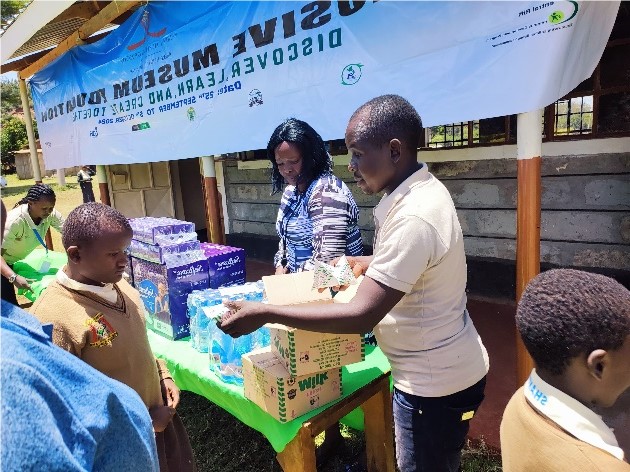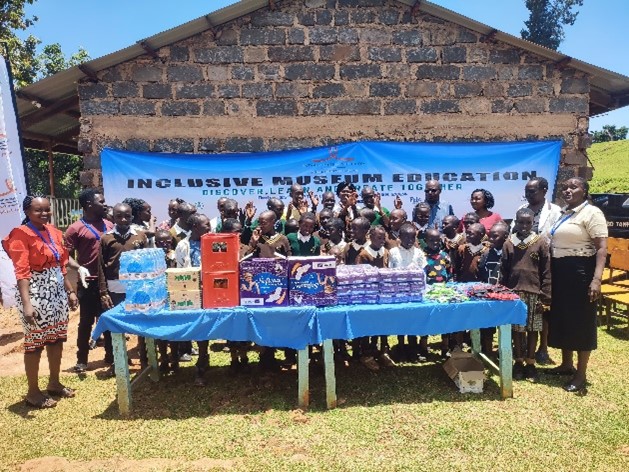Kabarnet Museum’s outreach education programmes to special needs schools
Written by Lillian Amwanda, Curator, Kabarnet Museum, National Museums of Kenya (Kenya, ITP 2024)
In October 2024, Kabarnet Museum, a regional museum under National Museums of Kenya, embarked on an extraordinary mission to bring history, culture, and education closer to the classrooms of students with special needs across Baringo County. Over the course of two weeks, the museum team visited 14 special needs schools, reaching over 550 students, driven by a heartfelt vision of making cultural heritage accessible, inclusive, and deeply integrated into their everyday learning environments. This program was born out of the invaluable insights and skills I gained whilst attending the 2024 International Training Programme at the British Museum, particularly the sessions delivered by the Learning and National Partnerships department, which provided the foundation for its development. Additionally, the programme was made possible and successful by the generosity of Kabarnet Museum Partners.
As a museum we believe that learning is for everyone. Museums are not just spaces to display history and science; they are platforms for interaction, exploration, and connection. However, we recognize that learners with special needs often face barriers to accessing these enriching experiences. That’s why we designed an outreach education program specifically tailored to the needs of students with hearing, visual, physical, and intellectual impairments.
Our mission was to make museum learning accessible, interactive, and enjoyable for all. Through thoughtful planning and a multi-sensory approach, we created an inclusive environment where every participant could fully engage with our educational programs on topics like evolution, material culture, reptiles, birds, vertebrates and invertebrates.
The program relied on visual aids, such as diagrams, sign language interpreters, and tactile experiences to help us connect with hearing impaired pupils. Teachers played a crucial role in bridging communication gaps, while handling artifacts and models brought lessons to life. This approach encouraged active participation and promoted deeper understanding among the students.
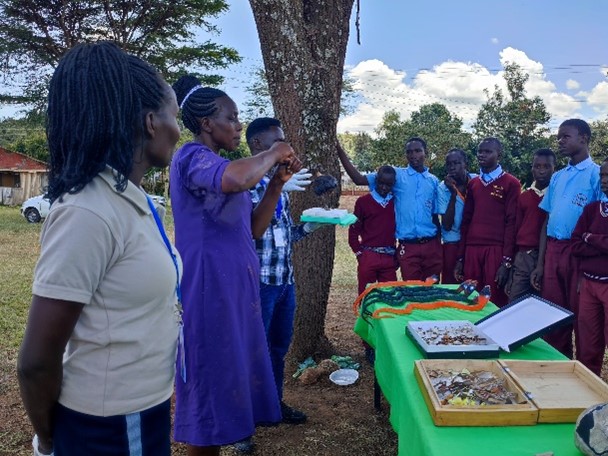

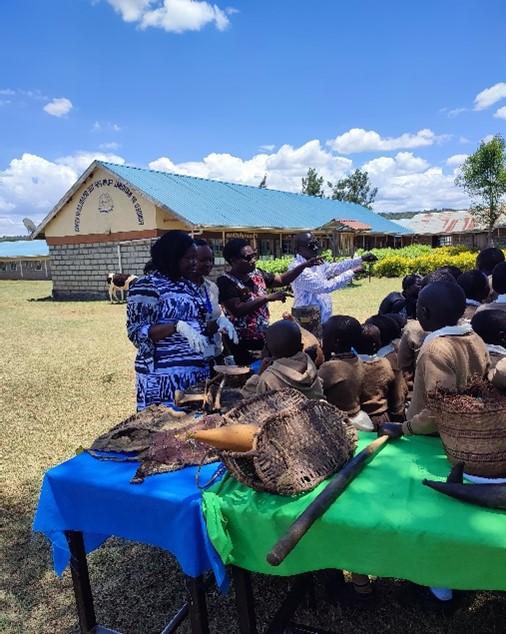
For learners with visual impairments, we made the experience come alive through detailed verbal descriptions and hands-on exploration of objects which fostered a tangible connection to the topics. Guided by teachers and museum staff, students discovered the joy of seeing through touch and sound.
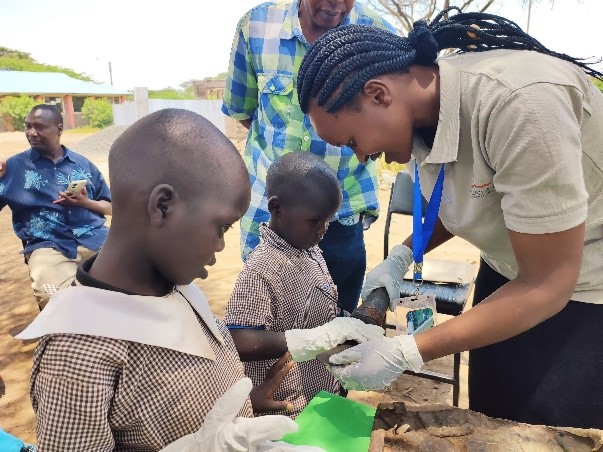



Accessibility was at the heart of our program for students with physical impairments. From adjusted seating and display arrangements to engaging visuals and verbal explanations. Emotional support was also a key focus, creating a warm and welcoming space for everyone to learn.
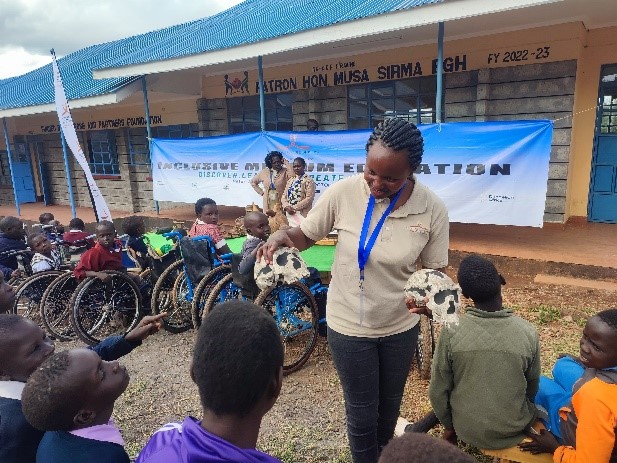
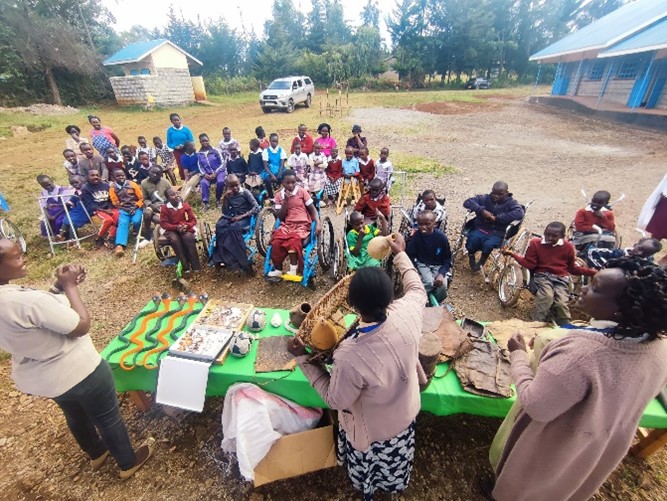
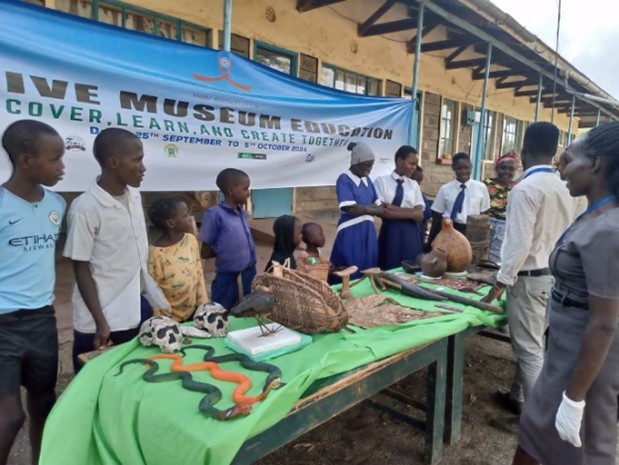
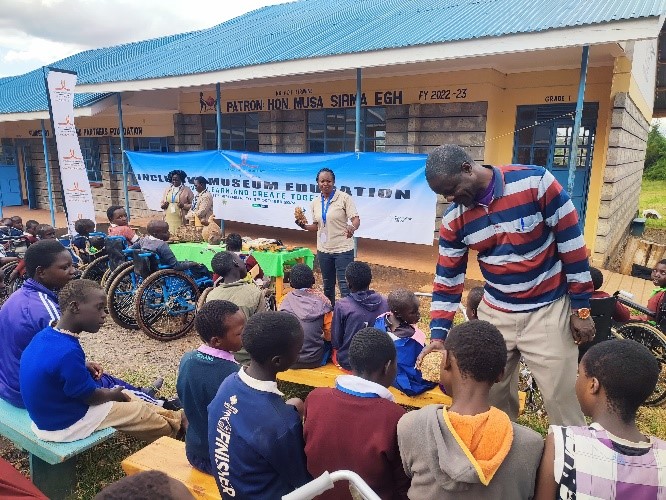
During the program, engaging learners with learning difficulties was a journey filled with both challenges and triumphs. We approached this group with creativity and empathy, aiming to make lessons engaging and memorable. However, we quickly learned that normal museum approaches were not applicable, simply because children with learning difficulties do not follow the standard school curriculum, which made it difficult for them to connect with our museum objects. The cultural artifacts and scientific specimens we had often led to confusion and others laughed at them.
For most learners with learning difficulties, the museum artifacts didn’t register as historical or cultural treasures. Instead, a few saw them as snacks and tried to eat them. Others took museum stools and made themselves comfortable, seemingly unbothered by the activities we had planned. A handful of students even picked up objects and threw them aside, unaware of their significance.
There were also moments when some learners seemed unsure of why we were there at all. They didn’t connect our presence with the planned lessons, and their engagement wandered to other interests in their environment. While our educational activities had their ups and downs with the children with learning difficulties, a remarkable shift happened when we presented the students with soft drinks, sanitary towels, and dignity packs. The atmosphere transformed. The hesitation and uncertainty melted away, replaced by smiles and contagious laughter. The joy spread through the children in the school like sunlight breaking through clouds. We learned our lessons and realized that engaging children with learning difficulties requires time, understanding and willingness to meet their needs. But despite the hurdles faced with these children, there were moments of connection where some learners enjoyed the tactile experiences of handling objects, even if they did not fully grasp their historical or scientific significance. The small wins reminded the museum team that inclusion is not about perfection but about creating opportunities for every learner to participate in a way that feels meaningful to them.
At each school, the museum team was met with boundless enthusiasm. At Ochii School for the Deaf, where the program was officially launched, the students eagerly signed to one another, brimming with curiosity. These children could relate with the museum objects since they form part of their syllabus and their silent song and dance made us enjoy the moment we spent in their school.
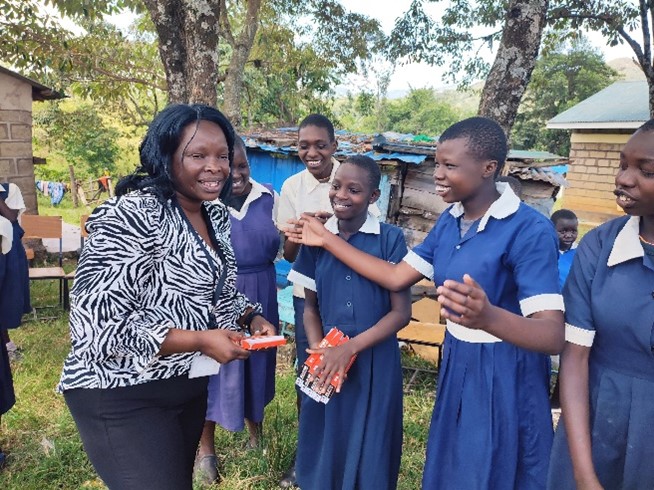

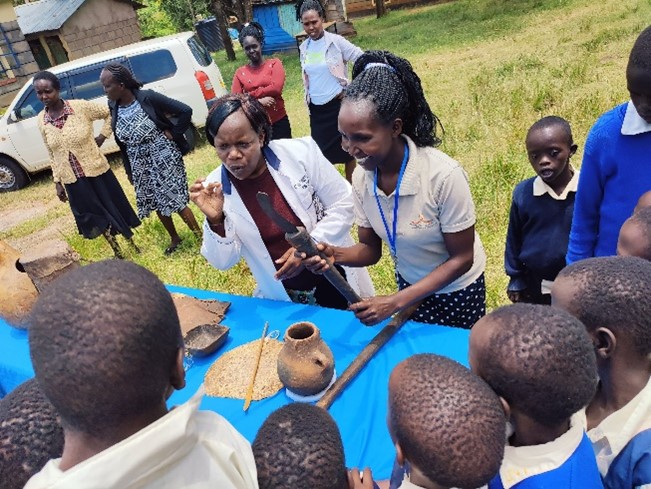
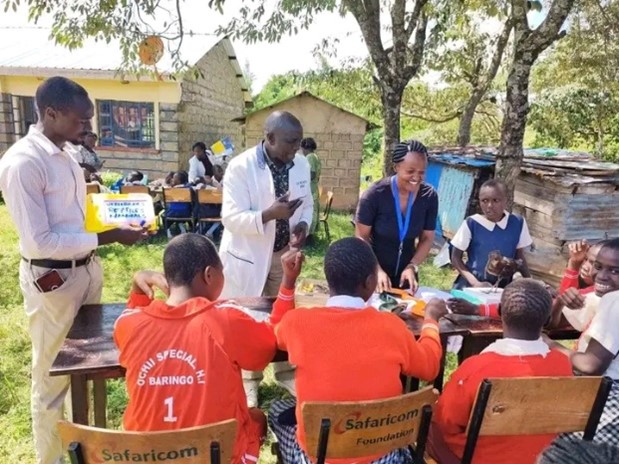
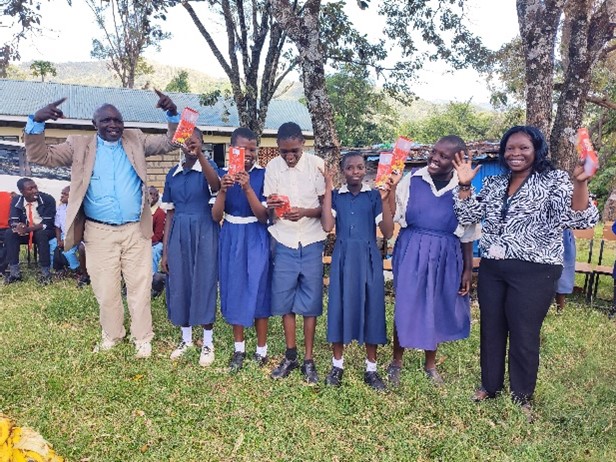
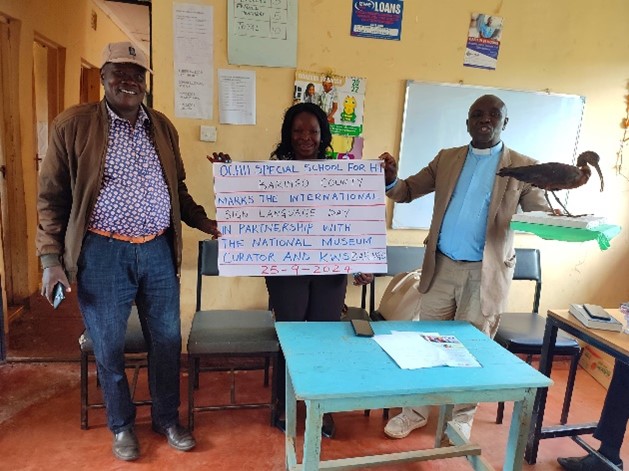
At Kabartonjo Special School for the Visually Impaired, the anticipation was with excitement as students listened intently to their head teacher as she gave descriptions of the museum visitors and their fascinating objects.
The tactile and hands-on activities left an indelible mark. Students were captivated by touching gourds, which were once essential for storing milk and water. As they held and examined the gourds through touching, many marveled at the creativity of their ancestors. The majority of the students connected deeply with the gourds, as they hold a significant place in their cultural heritage. Many of the students come from pastoralist communities where milk is a staple food for families, and the gourd is an essential tool for storing and serving it. This shared cultural context made the gourds not just artifacts, but symbols of home and tradition, resonating powerfully with their own lived experiences.
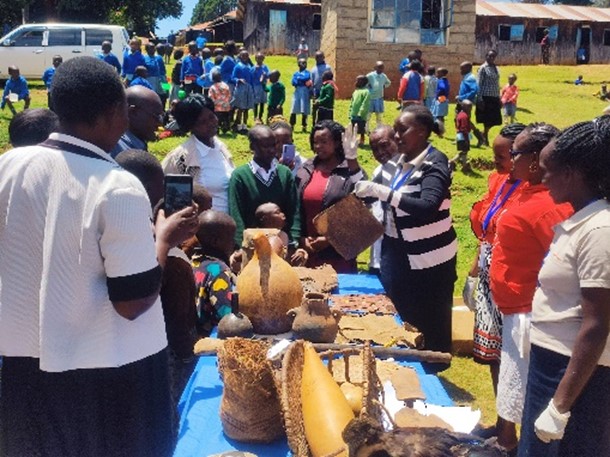
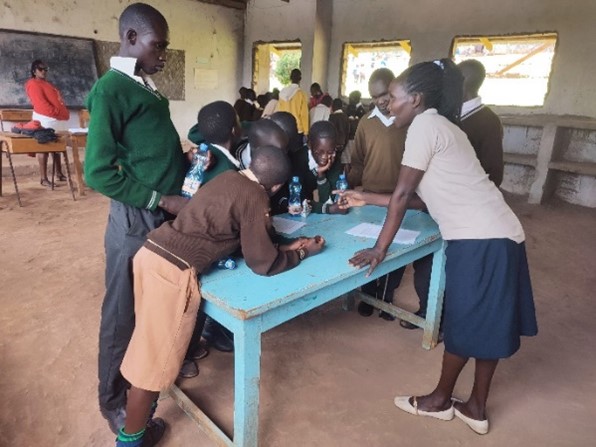
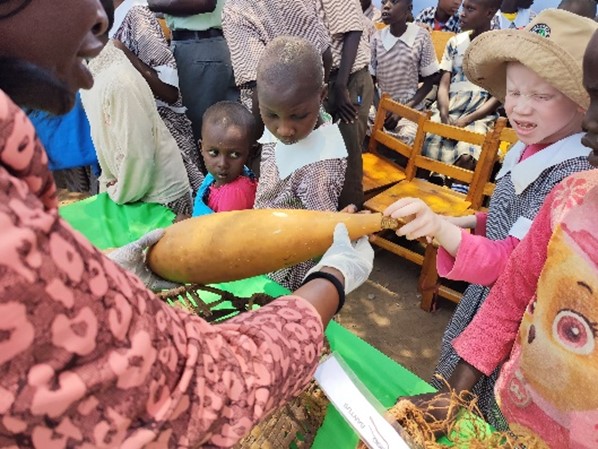
At St Patrick school for the physical impairment, agricultural tools like hoes ignited imaginations as students tried to relate their uses and connect them to modern farming practices. The hominid models, used to explain human evolution, provided a unique tactile learning opportunity for visually impaired students, who traced the models’ contours to understand the history of humanity. This is part of their curriculum.
Among the many treasures brought by Kabarnet Museum’s outreach team to special needs schools, none sparked as much curiosities like the plastic snake models. These replicas became the unlikely stars of the program, opening a fascinating world of reptiles to students, many of whom had never encountered snakes before.
Armed with lifelike models of various snakes, our aim was to achieve two goals to raise awareness of snakes’ vital role in ecosystems and to educate students on distinguishing venomous species from harmless ones. At first, the sight of the plastic snakes elicited gasps, nervous laughter, and even hesitant steps backward not only for the students but event to the teachers but as the students listened, touched, and learned, the fear faded away
For students with visual impairments, the session was particularly transformative. At Marigat Primary for the Visually Impaired, many of the students had never felt a snake before. Guided by the museum educators, they carefully ran their hands over the textured models, feeling the contours of the snake bodies, the ridges of their scales, and the shapes of their heads.
“Is this how real snakes feel?” One student asked in wonder, tracing the length of a model. The museum educators explained the physical differences between venomous and non-venomous snake and shared stories of how these reptiles contribute to pest control and maintaining ecological balance.
However, the lack of prior exposure presented challenges. For students who had never even imagined a snake, understanding the danger of venomous species was not easy. “How do we know it’s dangerous if we can’t see it?” One student asked earnestly. Isn’t this question challenging? In response, the museum team used descriptions and comparisons, making the tactile experience as enriching as possible. This led to the conversation shifting from fear to respect as students learned about the role of snakes in controlling rodent populations and balancing ecosystems.
The models also helped demystify the myths surrounding snakes. Through the tactile activity, students began to recognize that not all snakes are venomous or dangerous, and that understanding them can save lives. This newfound awareness sparked lively discussions among the students, who eagerly asked questions about snake habitats, behavior, and how to stay safe around them.
The snake session went beyond just teaching about reptiles; it instilled a sense of wonder and respect for the natural world. It also highlighted the challenges faced by visually impaired students, who often miss out on learning opportunities tied to visual experiences. By bringing this lesson directly to their classrooms, the museum team bridged this gap, ensuring that all students had the chance to explore and appreciate the intricacies of nature.
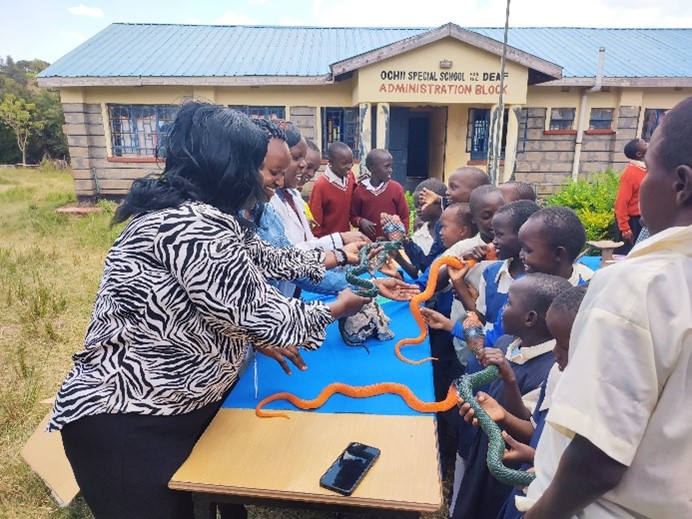
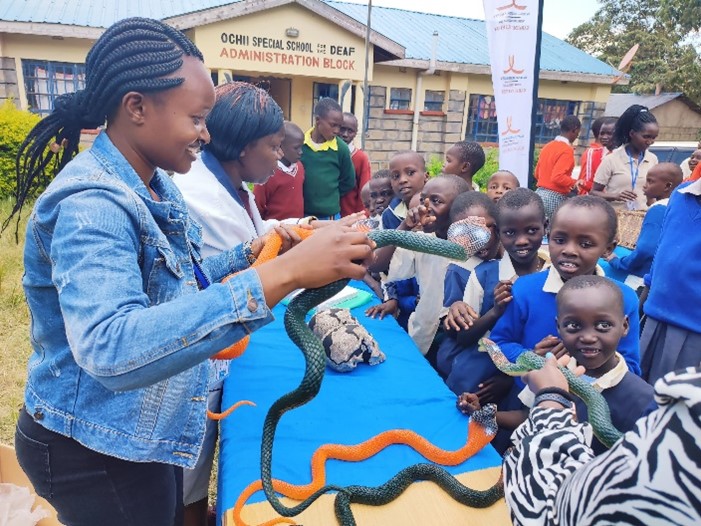
Beyond the educational lessons, the program offered practical support. Sanitary towels and dignity packs, soft drinks and mathematical sets were distributed to students, thanks to the generosity of donors including Dandelion Africa, Child Fund Central Rift, KCB Kabarnet Town, BCCA, Chemestar Hotel, Reale Hospital, Boresha Sacco, CEDGG, This holistic approach underscored the museum’s commitment to the students’ well-being.
Despite its success, the program faced logistical challenges, including the type of vehicles we used that could not manage the terrains of where some schools were located.
Read Lillian’s full report HERE.

